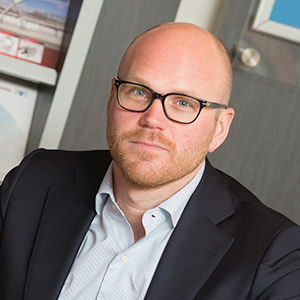Procurement & Quality
Martijn van Eck, Procurement Manager Van Leeuwen Zwijndrecht, the Netherlands:
 ‘Van Leeuwen works with a fixed group of preferred suppliers that supply the larger part of the materials. This yields various benefits. The quality is constant, the methods of work have been standardized and the coordination concerning product specifications is cast in concrete. Because of this we can lower the total cost of ownership together with our suppliers. Our approach simplifies the procurement process and yields cost benefits, as well as excellent delivery reliability for our customers. To safeguard this quality, we regularly audit our key and preferred suppliers and just like we do with other suppliers, we conduct quality inspections of the materials. Before we go into business with new suppliers, we first conduct a document analysis, an on-site audit and carry out a trial order. Our aim is to enter into a long-term partnership with our preferred suppliers. Our demands are stringent. We expect our preferred suppliers to be reliable, deliver high quality and to continuously work on improving their products and processes. In addition, we consider it important that these suppliers can supply a substantial quantity on a continuous basis at competitive market prices. Furthermore, they must be able to deliver their materials to Van Leeuwen branches in various countries and markets. In short, we expect our suppliers to treat us the same way we treat our customers: as A-status customers.’
‘Van Leeuwen works with a fixed group of preferred suppliers that supply the larger part of the materials. This yields various benefits. The quality is constant, the methods of work have been standardized and the coordination concerning product specifications is cast in concrete. Because of this we can lower the total cost of ownership together with our suppliers. Our approach simplifies the procurement process and yields cost benefits, as well as excellent delivery reliability for our customers. To safeguard this quality, we regularly audit our key and preferred suppliers and just like we do with other suppliers, we conduct quality inspections of the materials. Before we go into business with new suppliers, we first conduct a document analysis, an on-site audit and carry out a trial order. Our aim is to enter into a long-term partnership with our preferred suppliers. Our demands are stringent. We expect our preferred suppliers to be reliable, deliver high quality and to continuously work on improving their products and processes. In addition, we consider it important that these suppliers can supply a substantial quantity on a continuous basis at competitive market prices. Furthermore, they must be able to deliver their materials to Van Leeuwen branches in various countries and markets. In short, we expect our suppliers to treat us the same way we treat our customers: as A-status customers.’
Bas van Gelder, Quality Coordinator Van Leeuwen Pipe and Tube Group:
 ‘At the end of 2015, Van Leeuwen was the first customer in continental Europe to be certified for the ISO 9001:2015 standard by Lloyd’s Register (LRQA) in the Netherlands. This demonstrates that the Van Leeuwen branches throughout the world deliver the quality that the customer expects, regardless of the branch where the customer books his order. An important part of this process, for example, is the strict selection and control of our suppliers. This new standard is not only proof of our comprehensive process control, it also represents a step forward in controlling potential risks. Quality management now is an integral part of the organization, ranging from our strategic objectives up to and including our operational processes. This makes it possible to add value for the customer in every step of our operation. On the shop floor this is expressed in our communications, for example. On the basis of executive management’s objectives, every employee knows what is expected from him/her in order to contribute to the realization of these objectives. This creates greater commitment throughout and this will be noticeable in the quality of our services.’
‘At the end of 2015, Van Leeuwen was the first customer in continental Europe to be certified for the ISO 9001:2015 standard by Lloyd’s Register (LRQA) in the Netherlands. This demonstrates that the Van Leeuwen branches throughout the world deliver the quality that the customer expects, regardless of the branch where the customer books his order. An important part of this process, for example, is the strict selection and control of our suppliers. This new standard is not only proof of our comprehensive process control, it also represents a step forward in controlling potential risks. Quality management now is an integral part of the organization, ranging from our strategic objectives up to and including our operational processes. This makes it possible to add value for the customer in every step of our operation. On the shop floor this is expressed in our communications, for example. On the basis of executive management’s objectives, every employee knows what is expected from him/her in order to contribute to the realization of these objectives. This creates greater commitment throughout and this will be noticeable in the quality of our services.’
